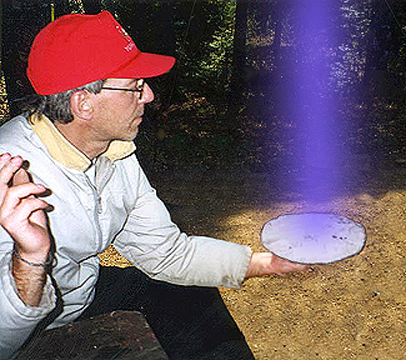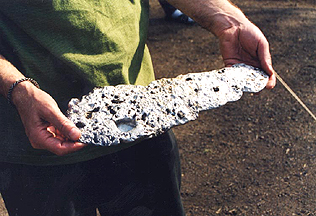 Dr. e contemplates his new Ward Capacitor.
Dr. e contemplates his new Ward Capacitor.
 Rounding the Corner on the Ward Capacitor
Rounding the Corner on the Ward Capacitor
 Dr. e contemplates his new Ward Capacitor.
Dr. e contemplates his new Ward Capacitor.
'The trick was coming to a fuller understanding of some interesting results from Ward statistics. The equations arereadily solved but predict nothing of value. Once we realized that, the actual hardware implementation was trivial.'
But early attempts at fashioning a working Wardon collector were painful. 'Nobody burned their face or anything but we had some real duds early on. The biggest problem was roundness.' Average flux densities approaching the theoretical limit of 12 were finally obtained with the admittedly crude aluminium device. 'Wardons naturally tend to coagulate, sortof like dried blood. We expect to be within a few percent of the Ward limit when our plutonium process goes on line next spring', noted e.
 Prototype devices were fundamentally flawed.
Prototype devices were fundamentally flawed.
And the science is exciting. Art Coates, one of e's flamboyant opponents, perseverated on the high correlationbetween nearly all important performance parameters and the capacitor's Q. 'What we have now is a very sensitive probefor measuring Intermediate Vector Wardon flux. The higher the Q, the lower the flux density required to extinguisha kampfire - and that's what it's all about.'
While the BFT team glows, failed opponentologist Steevie Ray Ward has his doubts. From his mobile facility just South of Ely, MN, he's preparing his treatise on oxygen starvation techniques. 'They all know I'm the fire king,' he whined.
'That's just sour grapes', noted e. Little Steevie is still hung up on thoroughly soaked berber technology.'
NOTE: The Ward constant ranges between zero and infinity but in any series of measurement's, it's average value is twelve. -ed.
 Return to the Mysterious Tales Index
Return to the Mysterious Tales Index